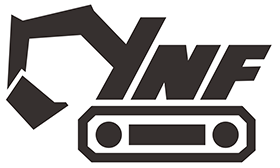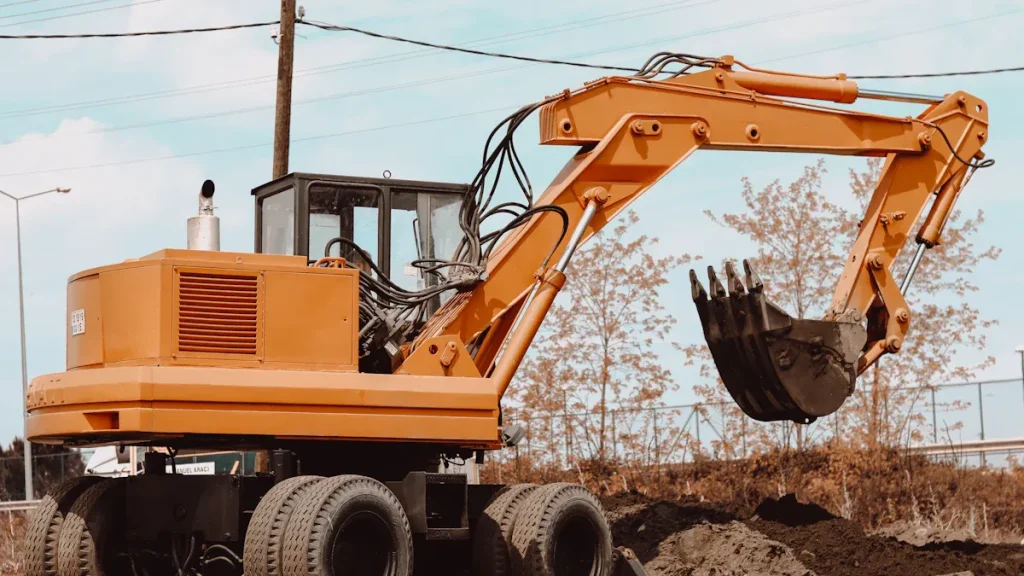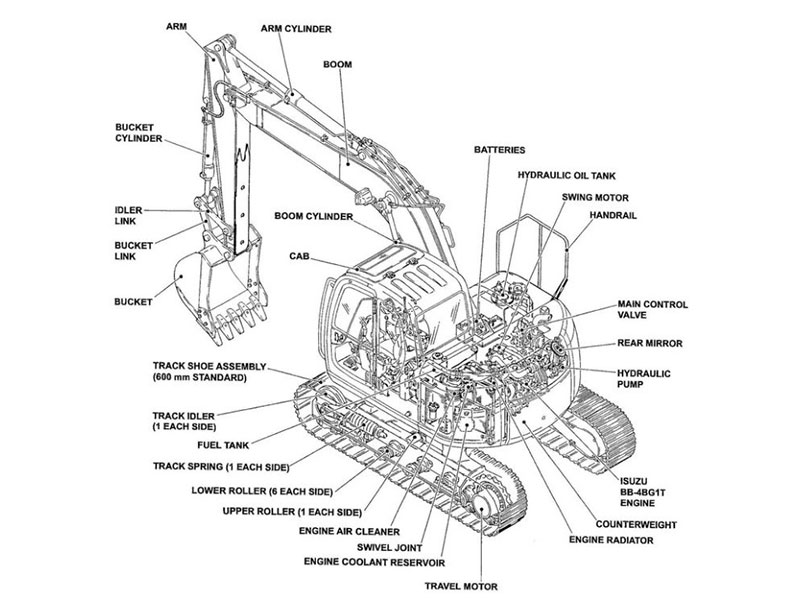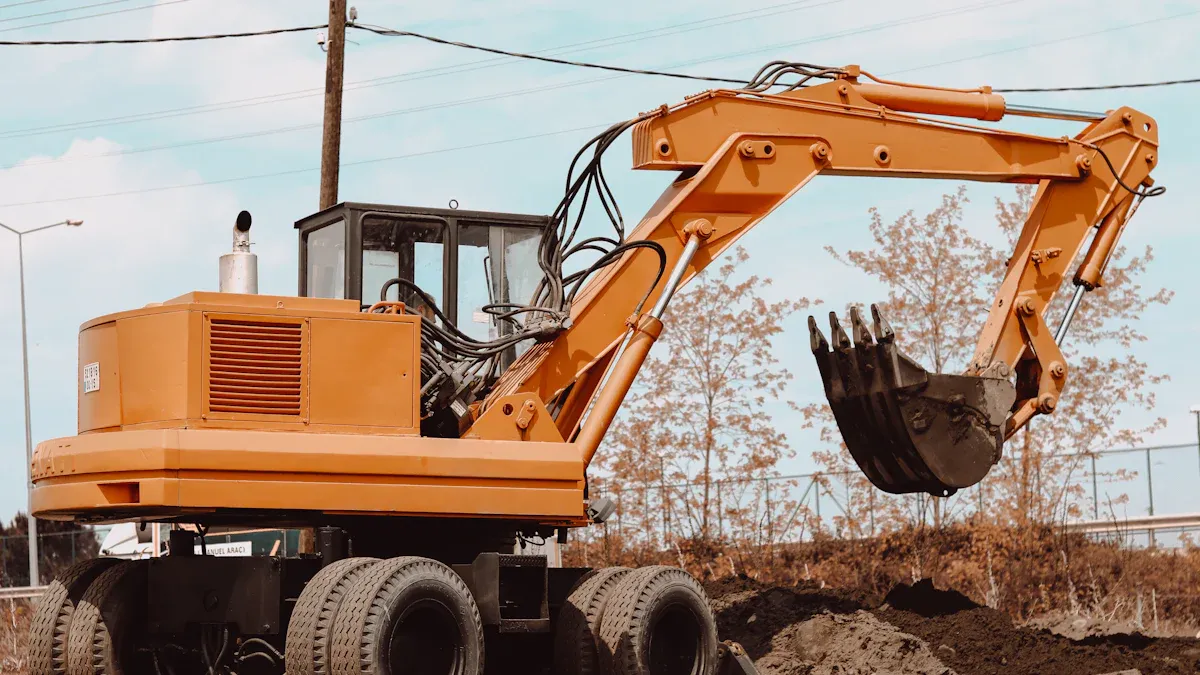
Choosing the right parts for a Case excavator depends on priorities such as reliability, budget, and how the construction equipment gets used. OEM parts deliver a genuine factory built and tested product, offering guaranteed fit and warranty support. Aftermarket case excavator parts appeal to many operators because they are cost-effective and widely available, but quality can vary.
Industry data shows:
OEM parts ensure precise compatibility and long-term reliability for construction equipment.
Aftermarket parts can offer savings, with some brands matching OEM performance, but careful selection is important to avoid issues.
Key Takeaways
OEM parts guarantee exact fit, high reliability, and strong warranty support, making them ideal for critical repairs and long-term use.
Aftermarket parts offer cost savings and faster availability but require careful selection to ensure quality and compatibility.
Choosing parts depends on machine age, usage, budget, and priorities; newer or heavily used machines benefit more from OEM parts.
Maintaining good records and performing regular inspections help operators select the right parts and reduce downtime.
Both OEM and aftermarket parts have roles; balancing upfront cost with long-term value leads to smarter maintenance decisions.
OEM vs Aftermarket Overview
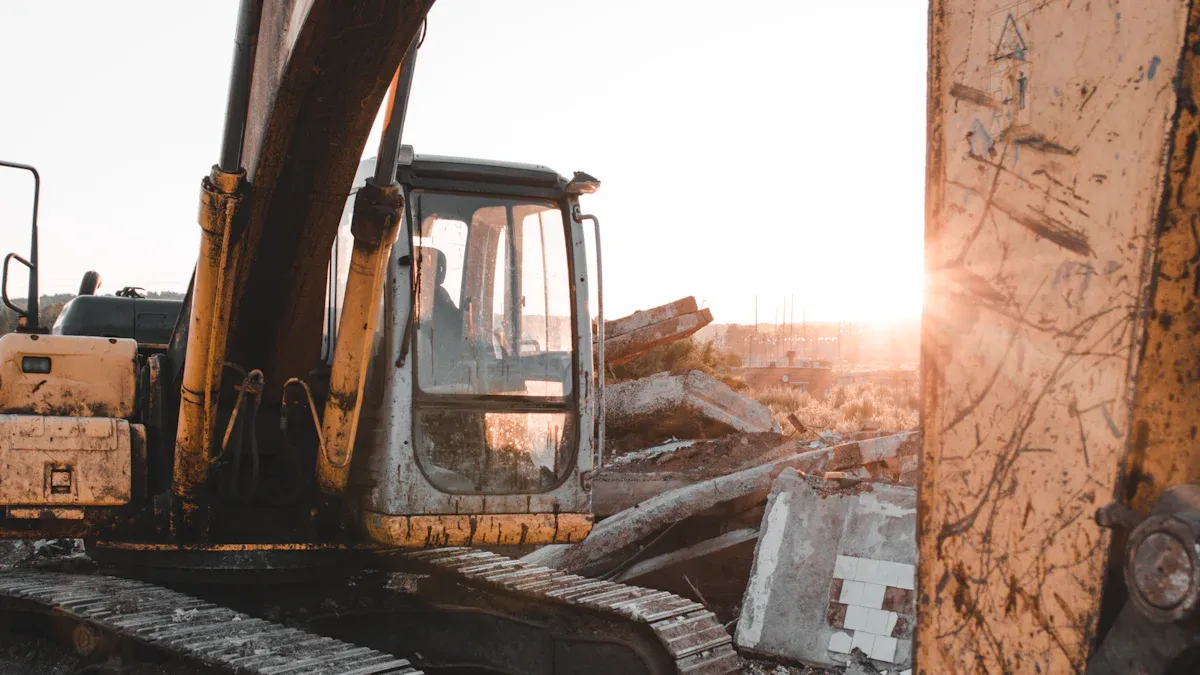
What Is New OEM?
New OEM parts come directly from the original manufacturer of the construction equipment. These parts are engineered for exact fit and reliability. Each new OEM part goes through strict inspections, including Incoming Quality Control, In-Process Quality Control, and Outgoing Quality Control. Manufacturers follow ISO 9001 standards and use advanced testing methods. Third-party agencies like TÜV Rheinland and SGS often certify these parts for durability and performance, even under tough conditions. Statistical Process Control helps maintain consistent quality during mass production. Operators who choose new OEM parts receive guaranteed compatibility, long-term reliability, and strong warranty support. These parts cost more, but they reduce the risk of breakdowns and ensure the excavator works as designed.
What Are Aftermarket Case Excavator Parts?
Aftermarket case excavator parts come from third-party companies, not the original manufacturer. These new aftermarket components offer a wide range of choices for construction equipment owners. Some aftermarket parts match OEM quality, while others may fall short. Quality and compatibility can vary, so buyers must check packaging, part numbers, and warranty details to avoid counterfeit or substandard products. Experts recommend consulting with trusted suppliers to ensure long-term performance and safety. Market research shows that replacement cycles and warranty expectations differ by region and supplier. Some new aftermarket components use innovative materials to improve durability, but others may lead to more frequent repairs.
Note: Counterfeit parts often lack quality control, do not meet OEM specifications, and have no warranty. Using these parts can cause safety risks and reduce machine performance.
Aspect | OEM Parts | Aftermarket Parts |
|---|---|---|
Design & Fit | Specifically designed and tested by the machinery manufacturer; ensures optimal fit and reliability. | May vary in quality; compatibility must be verified carefully. |
Durability | High durability, often backed by warranties and certifications. | Can be durable; some match OEM quality, but risk of substandard or counterfeit parts exists. |
Warranty & Support | Typically come with warranties and excellent technical support. | Usually lack warranties; technical support varies by supplier. |
Cost | Higher cost due to premium quality and manufacturer backing. | Lower cost; broad selection including economy options. |
Risk Factors | Low risk of incompatibility or failure. | Risk of counterfeit parts causing safety issues, decreased performance, and frequent repairs. |
Both new OEM and aftermarket case excavator parts serve important roles in maintaining construction equipment. OEM parts provide guaranteed compatibility and peace of mind. Aftermarket options can save money and offer faster access, but require careful selection to ensure proper fit and performance.
Quality and Fit
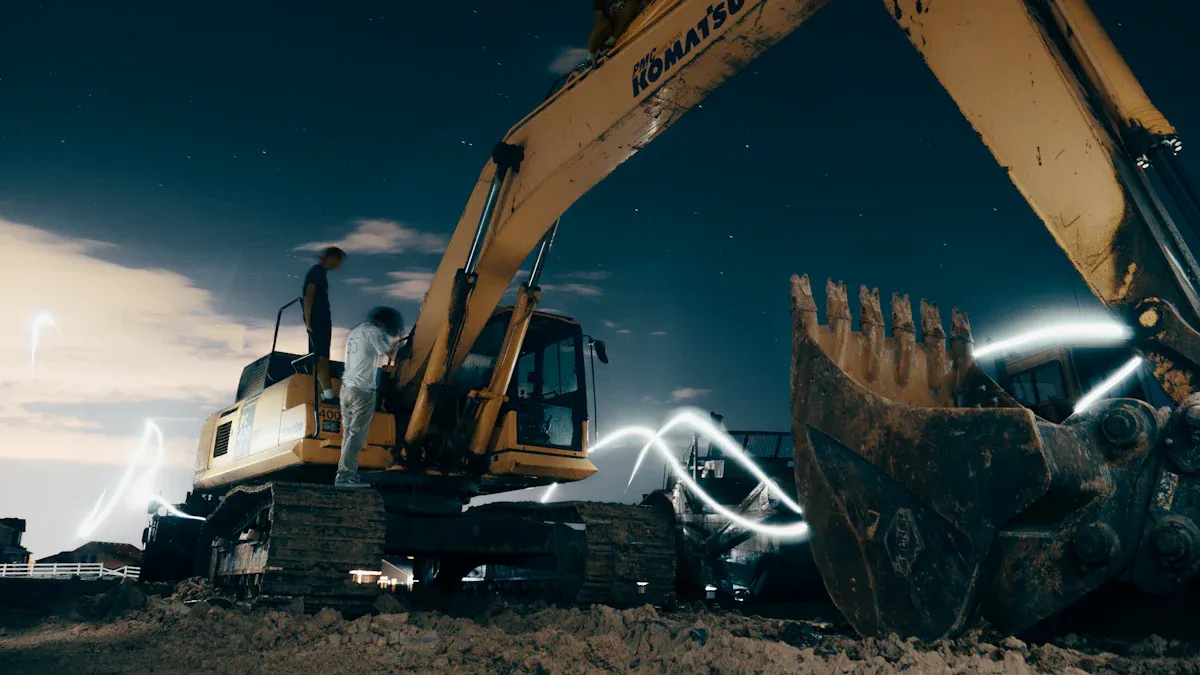
OEM Reliability
OEM parts set the standard for consistent quality in construction equipment. Manufacturers design each component to match the original specifications of the machine. This approach ensures compatibility and optimal equipment performance. OEM hydraulic cylinders, for example, undergo strict testing to guarantee reliability and long-term use. Operators trust these parts because they deliver superior quality assurance and reduce the risk of unexpected breakdowns.
OEM hydraulic cylinders also provide a perfect fit. The design process includes precise measurements and advanced engineering. This attention to detail helps maintain the highest level of equipment performance. Many operators choose OEM parts when they need to protect their investment and avoid costly repairs. The durability of these components often exceeds industry standards, making them a preferred choice for those who value reliability and compatibility.
Tip: OEM parts often come with warranties that support long-term use and provide peace of mind for equipment owners.
Aftermarket Variability
Aftermarket parts offer a wide range of options for Case excavator owners. Some high-quality aftermarket products can match the longevity and performance of OEM hydraulic cylinders. These parts may use innovative materials or improved designs to enhance durability. The highest quality of new aftermarket components can deliver impressive results, especially when sourced from reputable suppliers.
However, not all aftermarket hydraulic cylinders meet the same standards. Quality and fit can vary between brands and suppliers. Some aftermarket parts may not provide the same level of compatibility as OEM options. This variability can affect equipment performance and lead to more frequent repairs. Operators must carefully evaluate aftermarket hydraulic cylinders to ensure they meet the needs of their construction equipment.
Key points to consider when choosing aftermarket parts:
Check for quality assurance certifications.
Verify compatibility with your specific machine model.
Compare the performance of aftermarket hydraulic cylinders to OEM hydraulic cylinders.
Consult trusted suppliers for recommendations.
Note: The highest quality of new aftermarket parts can offer cost savings and reliable performance, but lower-quality options may compromise durability and equipment performance.
Warranty and Support
OEM Warranty Benefits
OEM warranties provide strong protection for equipment owners. Manufacturers like Caterpillar and Takeuchi offer warranties that cover both parts and labor. These warranties often last from 12 to 24 months or a set number of operating hours. Some brands, such as Takeuchi, provide a 3-year/3,000-hour Premier Warranty when owners use genuine OEM parts. This coverage can extend up to 5 years with special plans. OEM warranties require the use of original components, including oem hydraulic cylinders, to keep coverage valid. If an owner uses aftermarket parts and they cause damage, the warranty may not apply.
OEM manufacturers show their commitment to support by setting aside large funds for warranty claims. For example, Caterpillar accrued $968 million in 2020 to handle warranty issues. This level of support gives owners peace of mind and ensures quick repairs with high-quality replacement parts.
OEM warranties also include access to skilled service teams. These teams use certified tools and follow strict repair standards. Owners benefit from reliable repairs and fewer unexpected costs. The use of oem hydraulic cylinders and other genuine components helps maintain the machine’s value and performance.
Aftermarket Limitations
Aftermarket warranties differ from OEM coverage. Most aftermarket suppliers offer limited or no warranty on their parts. Some may provide short-term guarantees, but these often cover only the part itself, not labor or related damage. If an aftermarket part fails and causes further problems, owners may face extra repair costs.
The Magnuson-Moss Warranty Act protects customers from unfair warranty denial. Dealers must prove that an aftermarket part caused the damage before refusing coverage. Still, using aftermarket parts can reduce warranty benefits, especially for critical components.
Owners should check warranty terms before choosing aftermarket options. Trusted suppliers may offer better support, but coverage rarely matches the level provided by OEM warranties. For critical equipment, OEM support remains the gold standard.
Cost-Effective Choices
Aftermarket Savings
Many owners of construction equipment look for cost-effective solutions when replacing parts. Aftermarket hydraulic cylinders and other aftermarket parts often provide a lower initial price compared to OEM options. This price difference can be significant, especially for large repairs or frequent maintenance. For example, aftermarket VECU computer versions usually cost around $550, while OEM versions can cost thousands of dollars. The warranty period for aftermarket parts ranges from six months to one year, and the quality gap with OEM is often small when sourced from reputable suppliers.
Part Type | Price Range (USD) | Warranty Period | Notes on Quality and Availability |
|---|---|---|---|
Aftermarket VECU Computer Version | Around $550 | 6 months to 1 year | Quality gap with OEM is small; widely available |
OEM VECU Computer Version | Thousands of dollars | Generally no warranty | Manufacturer support and assured compatibility |
General Price Comparison | Aftermarket parts cost 1/2 to 1/3 of OEM parts | Aftermarket warranty offered; OEM often no warranty | Aftermarket parts are cost-effective alternatives |
Aftermarket hydraulic cylinders are produced by third-party manufacturers. These cost-effective solutions help reduce maintenance expenses and make repairs more affordable. However, buyers should always check the reputation of the supplier and verify compatibility with their machine. Consulting experts can help avoid issues with quality or fit.
Tip: Choosing cost-effective solutions does not mean sacrificing reliability. Many reputable aftermarket suppliers offer parts that perform well and last long.
OEM Value
OEM parts deliver value through long-term reliability and strong warranty coverage. Although the initial cost is higher, these parts offer guaranteed compatibility and support from the manufacturer. OEM parts often reduce the risk of breakdowns and lower maintenance costs over time. Owners benefit from fewer unexpected repairs and less equipment downtime.
A cost-benefit analysis shows that higher upfront costs for OEM parts may be offset by savings in fuel efficiency, reduced downtime, and fewer repairs. Warranty coverage is usually more comprehensive with OEM parts, providing protection against defects and malfunctions. This level of support adds value for owners who want to protect their investment in construction equipment.
Preventive maintenance plans, such as Cat Customer Value Agreements, can further control long-term expenses. These plans provide scheduled servicing, parts delivery, and expert support, helping owners manage costs and keep machines running smoothly.
Note: Balancing upfront affordability with long-term value is key. Owners should consider both the initial price and the total cost of ownership when choosing between OEM and aftermarket parts.
Availability and Downtime
Sourcing New OEM
New OEM parts offer strong advantages in terms of availability and reduced downtime. Reliable manufacturers keep these parts in stock at multiple branch locations and distribution centers. This strategy shortens lead times and helps operators get their machines back to work quickly. Inventory automation allows companies to track consumption patterns and maintain the right stock levels. Automated replenishment reduces errors and delays, making it easier to source new OEM parts when needed.
Many OEM suppliers use GPS tracking to monitor shipments. This technology increases visibility, prevents theft, and improves delivery timing. Operators benefit from faster sourcing and fewer unexpected delays. Manufacturers also work with dependable logistics partners, ensuring timely international shipping and global distribution. These strengths help reduce equipment downtime and keep projects on schedule.
Tip: Choosing new OEM parts can minimize the risk of long waits during supply chain disruptions, such as pandemics or natural disasters.
Aftermarket Case Excavator Parts Access
Aftermarket case excavator parts provide another solution for reducing downtime. Many operators turn to aftermarket options because of their broad inventory and cost-effectiveness. Supply chain reports show a growing preference for aftermarket case excavator parts, especially when OEM parts face delays. Aftermarket suppliers often carry a wide range of products, including hydraulic pumps, engine parts, and undercarriage components.
The distribution reach of aftermarket case excavator parts is extensive. Suppliers serve customers across North America, Europe, Asia-Pacific, and other regions. This global network ensures that parts are available for many types of equipment and job sites. Buyers with budget constraints often choose aftermarket case excavator parts that meet or exceed OEM quality standards.
Key points about aftermarket case excavator parts access:
Broad inventory covers new, rebuilt, and used parts.
Suppliers serve residential, commercial, and industrial users.
Market segmentation and geographic coverage support fast delivery.
Note: While aftermarket case excavator parts offer wide availability, quality and compatibility can vary. Operators should verify supplier reputation before purchasing.
Choosing Parts
Machine Age and Usage
Operators should consider the age and workload of their excavator before selecting parts. Newer machines often benefit from OEM parts because these components maintain original performance and protect warranty coverage. Older equipment, especially those used for lighter tasks, may perform well with quality aftermarket replacement options. Heavy-duty machines that run daily require durable solutions, such as replacement hydraulic cylinders with high pressure capacity and strong sealing. For machines working in harsh environments, stainless steel or reinforced bucket types can extend service life.
Tip: Match the bucket type and track plate to the job site. Standard buckets work best for soft soil, while reinforced buckets handle stone and hard ground. Wide track shoes improve grip on gravel, and narrow shoes suit rocky terrain.
Critical Components
Critical components, such as hydraulic cylinders and electronic control accessories, demand careful selection. OEM-certified parts increase equipment lifespan by up to 45% compared to generic aftermarket alternatives. For example, Caterpillar’s genuine hydraulic components tolerate 18% higher pressure, which reduces failure in tough conditions. Most OEM warranties require certified parts, and using non-certified replacements can shift liability and increase risk. Operators should always prioritize reliability for essential systems to avoid costly downtime.
Budget and Priorities
Budget plays a major role in choosing between OEM and aftermarket replacement parts. Operators should use a Total Cost of Ownership approach, considering not just the initial price but also installation, maintenance, downtime, and residual value. The following guidelines help balance cost and performance:
Select material based on needs: aluminum alloy for lightweight jobs, stainless steel for durability, carbon steel for cost savings.
Prioritize brand reputation and after-sales support.
Ensure electronic parts are waterproof, dustproof, and compatible with the machine.
Maintain proper track tightness (2-3 cm) to reduce wear and improve performance.
Good maintenance and operator habits lower long-term costs.
Note: Aftermarket parts can offer savings, but quality and support vary. Always check supplier reputation before purchasing any replacement.
Myths
OEM Superiority
Many people believe that only oem parts can deliver the best performance for Case excavators. This idea often comes from marketing or habit, not from facts. In reality, aftermarket parts can match or even exceed the standards set by original manufacturers. Several factors challenge the myth of oem superiority:
Aftermarket undercarriage parts often come with warranties as strong as those from the factory, sometimes lasting up to 3 years or 4,000 hours.
The durability of a part depends on steel weight and material quality, not just the brand name.
Aftermarket suppliers often provide faster delivery and better support, especially for smaller operators who need quick solutions.
Some oem manufacturers do not share detailed specifications and may suggest full replacements when only a single part needs changing. Aftermarket providers offer more transparency and cost-saving options.
Availability can be a major advantage for aftermarket parts, reducing downtime when oem parts are on backorder.
Operators should look at the actual quality and support behind each part, not just the label. Choosing the right supplier and checking warranty terms matter more than the brand alone.
Aftermarket Quality
Some operators worry that aftermarket parts always mean lower quality. This belief does not reflect the full picture. Many aftermarket suppliers use advanced materials and strict quality control to produce reliable components. Trusted brands in the aftermarket industry test their parts to meet or exceed industry standards. They also offer clear warranty terms and customer support.
Operators should always check for certifications and compare product details. When sourced from reputable suppliers, aftermarket parts can deliver strong performance and long service life. The key is to avoid unknown brands and always verify compatibility with the machine.
Tip: Quality and reliability depend on the supplier, not just the type of part. Research and reviews help operators make smart choices.
Decision Checklist
Selecting the right parts for a Case excavator requires a systematic approach. Operators and fleet managers can use the following checklist to make informed decisions and keep machines running smoothly:
Track Replacement Frequency: Maintain a log of which parts need replacement and how often, based on the excavator’s operation manual. This helps identify wear patterns and plan ahead.
Inventory Management: Keep an updated inventory list. Stock frequently replaced parts to minimize downtime and avoid duplicate orders.
Maintenance History: Document machine usage hours and all maintenance activities. Digital or manual logs help track when replacements are due.
Scheduled Inspections: Conduct daily walk-around inspections. Focus on high-wear items such as bucket teeth, sprockets, rollers, track adjusters, springs, bearings, and tracks.
Preventive Maintenance: Inspect filters, hoses, seals, and belts regularly. Replace them as recommended to prevent unexpected failures.
Functional Checks: Test hydraulics, controls, lights, brakes, and attachments before each shift. Address any issues immediately.
Use of Technology: Employ telematics tools like EquipmentShare’s T3 or digital checklist platforms. These systems track performance, maintenance schedules, and inventory in real time.
Visual and Functional Documentation: Record all issues found during inspections with notes and photos. Report problems promptly to maintenance teams.
Data Analytics: Analyze inspection and repair data to spot trends. Use this information to forecast future part needs and optimize inventory.
Cleaning Routine: Clean the undercarriage regularly. Removing dirt and debris prevents damage and extends the life of critical components.
Tip: Proactive maintenance and accurate record-keeping help operators choose the right parts at the right time, reducing costs and avoiding unnecessary downtime.
A well-structured checklist, supported by repair history and data analytics, ensures that every maintenance decision is based on facts. This approach improves equipment reliability and maximizes uptime.
Operators should select OEM parts for critical repairs, warranty protection, and long-term reliability. Aftermarket options work well for cost savings, faster repairs, and non-critical components. The table below highlights key decision factors:
Decision Factor | Impact on Choice |
|---|---|
Ownership Duration | Longer use favors OEM |
Equipment Utilization | High use favors OEM |
Affordability | Tight budgets favor aftermarket |
Turnaround Time | Fast repairs favor aftermarket |
Warranty & Quality | OEM offers peace of mind |
Popp Excavating, Inc. improved reliability and saved $30,000 yearly by using aftermarket filtration systems. Each operator should review the checklist and consult trusted suppliers before making major decisions.
FAQ
What is the main difference between OEM and aftermarket Case excavator parts?
OEM parts come from the original manufacturer and guarantee fit and performance. Aftermarket parts come from third-party companies. Quality and compatibility can vary. Operators should check supplier reputation before buying.
Can aftermarket parts void my equipment warranty?
Using aftermarket parts may affect warranty coverage. Manufacturers often require OEM parts for warranty claims. If an aftermarket part causes damage, the warranty may not apply. Always review warranty terms before making a decision.
Are rebuilt OEM components a good option for older machines?
A rebuilt oem component can extend the life of older equipment. These parts offer OEM quality at a lower price. Operators should confirm that the supplier follows strict rebuilding standards for safety and reliability.
How can I ensure aftermarket parts will fit my Case excavator?
Operators should match part numbers and machine models. Trusted suppliers provide compatibility charts and technical support. Checking reviews and certifications helps avoid fitment issues.
When should I choose OEM parts over aftermarket options?
Operators should select OEM parts for critical systems, warranty protection, and long-term reliability. Aftermarket parts work well for non-essential repairs or when cost and speed matter most.
